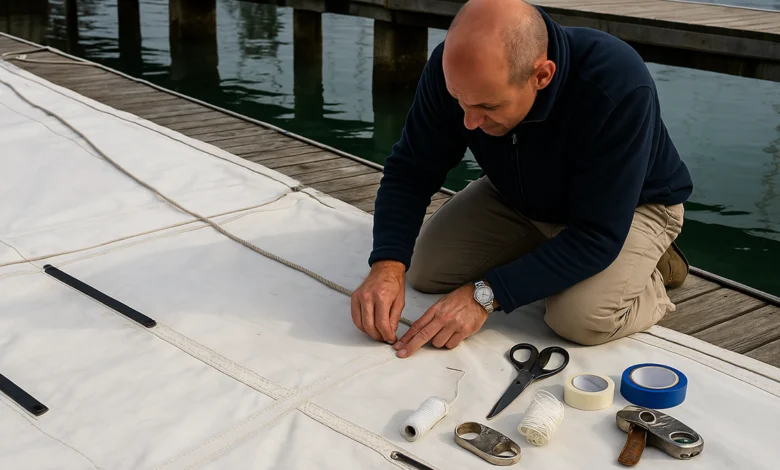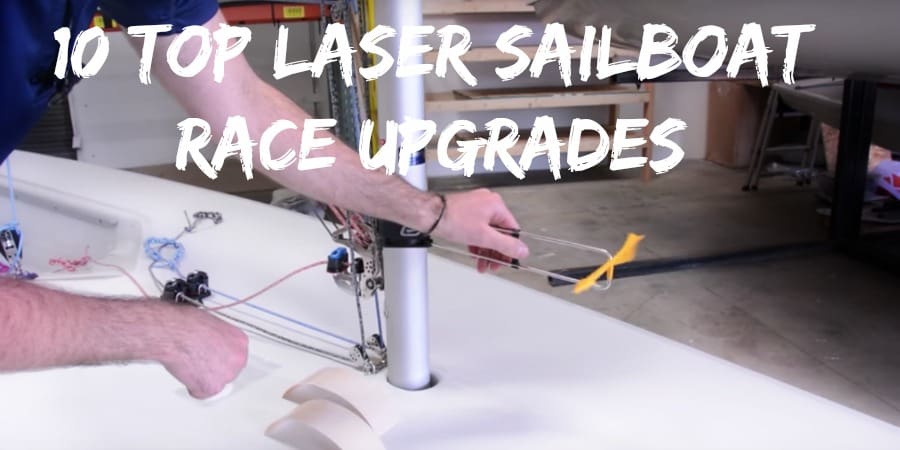
Spring is the ideal time to perform comprehensive spring sailboat maintenance to ensure your vessel is ready for the demanding sailing season ahead. Whether you are preparing a classic monohull, a high-performance catamaran, or a traditional wooden yacht, a thorough maintenance routine is essential to guarantee safety, reliability, and peak performance.
Introduction: Why Spring Sailboat Maintenance is Crucial
Experienced sailors know that proper spring sailboat maintenance is not just a matter of checking boxes on a list. It requires attention to detail, understanding the nuances of your vessel’s construction, materials, and systems, and using appropriate tools and products. Neglecting key areas can result in premature wear, mechanical failures, or even safety hazards during offshore passages.
Spring Sailboat Maintenance Checklist
1. Hull Inspection and Cleaning for Spring Sailboat Maintenance
- Inspect for Damage: Examine the hull meticulously for osmotic blisters, gelcoat cracks, and areas of delamination. Use a moisture meter if necessary, especially if the boat has spent prolonged periods in the water.
- Cleaning and Polishing: Clean the hull with a dedicated marine hull cleaner, avoiding harsh chemicals that can damage gelcoat or painted surfaces. Polishing should be done with a dual-action polisher to ensure even application and avoid swirl marks.
- Anti-fouling Paint: Check the condition of anti-fouling paint, particularly around the keel, rudder, and waterline where wear is most evident. Reapply if necessary, ensuring proper sanding and priming when switching paint types or brands.
2. Sails and Rigging
- Inspect Sails: Lay out sails on a clean, dry surface to inspect for UV degradation, chafing, and loose stitching. Pay particular attention to batten pockets, reef points, and headboards, which are common stress points.
- Check Rigging: Inspect shrouds, stays, turnbuckles, and terminals for signs of corrosion, fatigue, or hairline cracks, especially in swaged fittings. Use a magnifying glass if needed. For running rigging, check for stiffness, discoloration, and fraying.
- Lubrication: Lubricate all moving parts such as blocks, winches, and traveler cars with a marine-grade lubricant that is compatible with the materials used (stainless steel, aluminum, plastic). Avoid using petroleum-based products on synthetic ropes.
3. Engine and Mechanical Systems
- Oil Change: Replace engine oil and filter, ensuring the new oil meets the manufacturer’s specifications (e.g., SAE ratings). Warm the engine before draining to ensure contaminants are removed efficiently.
- Cooling System: Inspect hoses, clamps, and raw water impellers for signs of wear or deterioration. Flush the cooling system using a descaling solution if necessary.
- Battery Maintenance: Test batteries using a multimeter and load tester. Clean terminals with a wire brush and apply a corrosion inhibitor spray. Replace any batteries showing signs of reduced capacity.
- Fuel System: Replace fuel filters and inspect lines for signs of degradation or leaks. In diesel engines, bleed the system properly to avoid airlocks.
4. Electronics and Safety Equipment
- Check Navigation Equipment: Test GPS, radar, AIS, VHF radios, and chartplotters. Update software and charts where necessary. Ensure antennas are corrosion-free and connections are secure.
- Inspect Lights: Check all navigation, anchor, and interior lights. Replace bulbs or LEDs as needed and clean connections to prevent moisture-related issues.
- Safety Gear: Inspect life jackets, EPIRBs, fire extinguishers, and emergency flares. Confirm expiration dates and service any required equipment according to manufacturer guidelines.
5. Interior and Comfort
- Clean and Ventilate: Thoroughly clean the cabin, including all bilges, storage areas, and ventilation ducts. Mold and mildew can be insidious problems that degrade fabric and compromise air quality.
- Inspect Upholstery: Check cushions, bunks, and other soft goods for moisture, mold, or damage. Replace or clean as necessary.
- Stock Supplies: Verify the condition of your first-aid kit, repair tools, and spare parts. Replace expired or missing items.
Recommended Products and Tools
For professional-level maintenance, consider using the following products:
- Hull Cleaning Solutions: Star brite Hull Cleaner, 3M Perfect-It Gelcoat Compound and Wax, Awlgrip Awlcare Protective Polymer Sealer.
- Sail Repair Kits: Sailrite Ultrafeed LSZ-1 Sewing Machine, Bainbridge Sail Tape, Dacron Adhesive Patches.
- Lubricants: Harken Marine Lubricant, McLube Sailkote Dry Lubricant.
- Anti-Fouling Paint: Interlux Micron 66, Pettit Trinidad Pro, Sea Hawk Biocop TF.
- Battery Testers: Blue Sea Systems Digital Multimeter, NOCO Genius G3500 Charger.
- Safety Equipment: Mustang Survival Elite PFD, ACR ResQLink 400 EPIRB, Orion Safety Flares.
Keep Your Sailboat in Top Shape All Season Long
By diligently following this spring sailboat maintenance guide, you can ensure your vessel remains in optimal condition throughout the sailing season. Comprehensive spring maintenance is not only about ensuring your boat is seaworthy, but also about maximizing performance and longevity. Every vessel is different, and experienced sailors know the importance of tailoring their maintenance routine to their specific boat. By using high-quality tools and following proven procedures, you can enjoy a safe, trouble-free sailing season.




